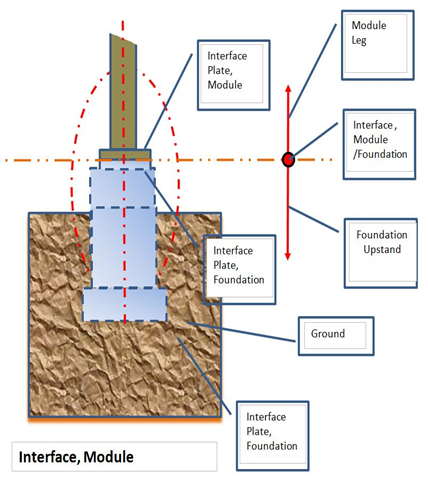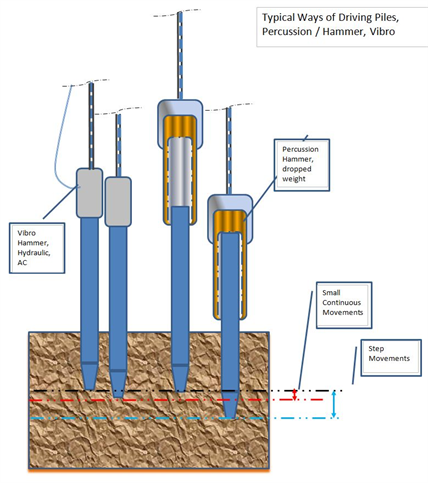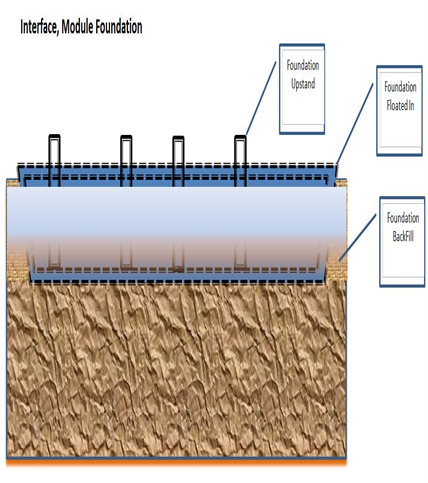The first Diagram shows a typical concrete support. These may be singular or linked together by a concrete raft. Where silt or soft ground is experienced then piles as in the next Diagram may be used. Numerous types of pile exist, impact, hydraulic driven, drilled, screwed etc. For large areas in ground such as swamp the concrete raft may take the form of a barge, last diagram. In some instancies where bedrock exists the the support may be directly connected to the bedrock.
a general understanding of Modules
MODULEitus
SUPPORTS Onshore deals with the foundations and structures that support modules Onshore.
Whats the difference Offshore to Onshore
In the previous, 2.0 SUPPORTS Offshore the most important difference is the impact that the Sea imposes on the Support design.
Onshore there is no such restraint, however other restraints exist which are found in both cases. Earth Quake considorations affect both an Onshore Structure and an Offshore Jacket and must be designed for in both cases.
Another Major Difference is that the Blow Out Preventer (BOP) or Isolation Tree in one case may be Submerged in water and referred to as a Wet Tree. Where as in the other it is on the Surface and referred to as a Dry Tree

1, Module Support, Plinth

2, Pile Supports

3, One Piece Foundation, Barge Shape
As a generalisation most primary support of modules Onshore generally uses Concrete with secondary support steel. Offshore very little concrete support exists (Exceptions are Condeep Jackets in Reinforced Concrete) and generally uses some form of Steelwork.
C2V
Index, Section 3 SUPPORTS< Onshore,
C2V
C2V
C2V
Level 1
Level 2
Level 1







